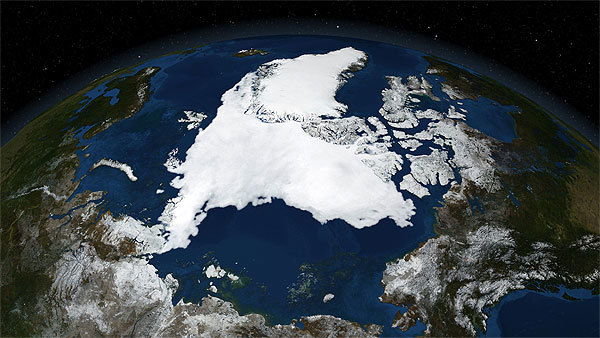Statement to WMO PSTG-3 : INFORMATION SERVICE FOR COLD REGION

GROUP ON EARTH OBSERVATIONS (GEO) COLD REGIONS
(WA-01-C3: INFORMATION SERVICE FOR COLD REGION)
2013.5.22~2013.5.23@Paris
1. GEO Cold Region motivationsand visions
TheGEO Cold Regionidea keeps the “Cold Region” as the observation target area, whichrelatesstrongly to frozen waterin its various forms, associated with influence of Water(Cryosphere), Ecosystem, Biodiversity, Health, Energy, Disaster, Climate, Weather andAgriculture issues. Most of these issues are relevant to the GEOSS nine Societal Benefit Areasand therein the implementation of 26 associated tasks. Cold Region has its cross cutting naturein the GEOSS framework.
The motivations and visionsof GEO Cold Regions activities are to
1) Recognize that Cold Region is the most fragile ecosystem in the world, which not onlyincludes the South and North Poles, but also the Third Pole (Tibetan Plateau) andMountain Regions(alpine);
2) Implement the observation strategy and provide a proactive framework for thedevelopment of information and related services for the “Future Earth” researchinitiative and to assess the sustainable development ability addressed in Rio+20;
3) Provide spatially Cross Continent Observation Coordination and Cross CuttingApplication Domain Observation Synergy based on the scientific oriented driving;
4) Fulfil the observation gap in the far and hard-to-reach cold region by satellite and in-situdata through the global platform of GEO;
5) Strengthen thepartnerships with policy-makers, stakeholders, and funders over the coldregion ecological, environmental and engineering fields;
6) Facilitate the national infrastructure and capacity building as a whole effort in cold regionfrom GEO Members and POs.

2. The GEO Cold Regions in GEOSS Work Plan
The GEO Cold Regions (currently WA-01-C3) are now developing through a number ofactivities, including mainly:
Observations and Information
- Conduct a distributed cyber(e)-infrastructure to collect, manage, publish and share polarresearch results and implement multi-disciplinary interoperability following a Brokeringapproach, supportingSCAR data policy and in accordance with European andinternational standards, including GEO/GEOSS, INSPIRE.
- Fully aware of all the cryosphere projects applied for at 20 of INTERACT's 44 researchstations, with the INTERACT’s infrastructure project which base in northern Europe,Russia, US, Canada, Greenland, Iceland, the Faroe Islands and Scotland, and to buildcapacity for research and monitoring in the European Arctic and beyond, and is offeringaccess to numerous research stations through the Transnational Accessprogram.INTERACTis also offering metadata and some datasets and possibilities foradditional observations required by GEO.
- Implement the information services for Cold Regions, for example, theCryoClimCryospheric climate monitoring.Provide the parameter data product andtools/systems/modelsto the GEO DataCORE.
- Provide the polar station observation and satellite data coordination through appropriatenational,regional and global systems and centres (Validation and Calibration).
- Promote the integration with integrated atmospheric and climatic observation andmodeling data from a network of high-altitude mountain stations in the Alps, Himalaya-Karakoram, Rwenzori and Andes in the framework of the Ev-K2-CNR SHARE programand the national Italian project NextData.
- CAFFs provide the Arctic Biodiversity Data Service (www.abds.is)
- Coordinated Asia-European long-term Observing system of Qinghai–Tibet Plateauhydro-metOeorological processes and the Asian-monsoon systEm with Ground satelliteImage data and numerical Simulations (CEOP AEGIS)
Coordination and Programs
- Build a polar data catalogue through integrated observation and modeling data from thebroadrange of “International Polar Year” research activities, for example: CAFF/CBMPdata -http://www.polardata.ca/.
- As a component of the Global Cryosphere Watch (GCW) portal, establish aCryosphereConstellation of Portals by linking existing and proposed portals ofcryospheric information.
- Support the development of sustained and coordinated pan‐Arctic observing and datasharingsystems that serve societal needs. Improve the networking among existingobserving systems andsites to create pan
- Arctic observing networks (CAFF andINTERACT pan-Arctic observation networks). Promote the implementation of theSustainable Arctic Observation Network (SAON).
- Integrate the Svalbard Integrated Arctic Earth Observing System (SIOS) and theCryoClim Cryospheric climate monitoring service into GEOSS.- Implementation the Third Pole Environment program and Mountain ecosystemobservations.
- And other individuals (with GEO volunteer mechanism) who are interested in this ColdRegion efforts.
The main participants (with a list of 68 people) are- Canada, China, Denmark, EC, Finland, Germany, India, Italy, Japan, Norway, Spain,UK, USA,SAON, ICIMOD, WMO- Other Task Contributionfrom Ecosystem, Biodiversity, Water and Climateand etc.
3. Strategy plan and coordination regimes for GEO Cold Regions
The GEO Cold Regions builds on the GEOSS Broker system and work with the exiting efforts,fully leverage the GEOSS Common Interface (GCI) infrastructure,
The GEO Cold Region Coordination regimes are to,
- Institutionally, to build on the exiting efforts all over the world- Cutting Cross the multidisciplinarydomains:Cryosphere, Ecology, Biology, Environment,Hydrology, and Climatology.
- Hierarchy architecture: Observation Implementation(infrastructure), Coordination(systembuilding) and GEO Cold Region (system of systems), and Capacity Building.
- Response to the efforts from the GEO Members and POs,- Address the GEOSS 2015 strategyaim and beyond (Post 2015).
- Fully take advantage of the exiting efforts and GEO volunteer mechanism, whichencourage more individual experts and activities involved in global efforts.